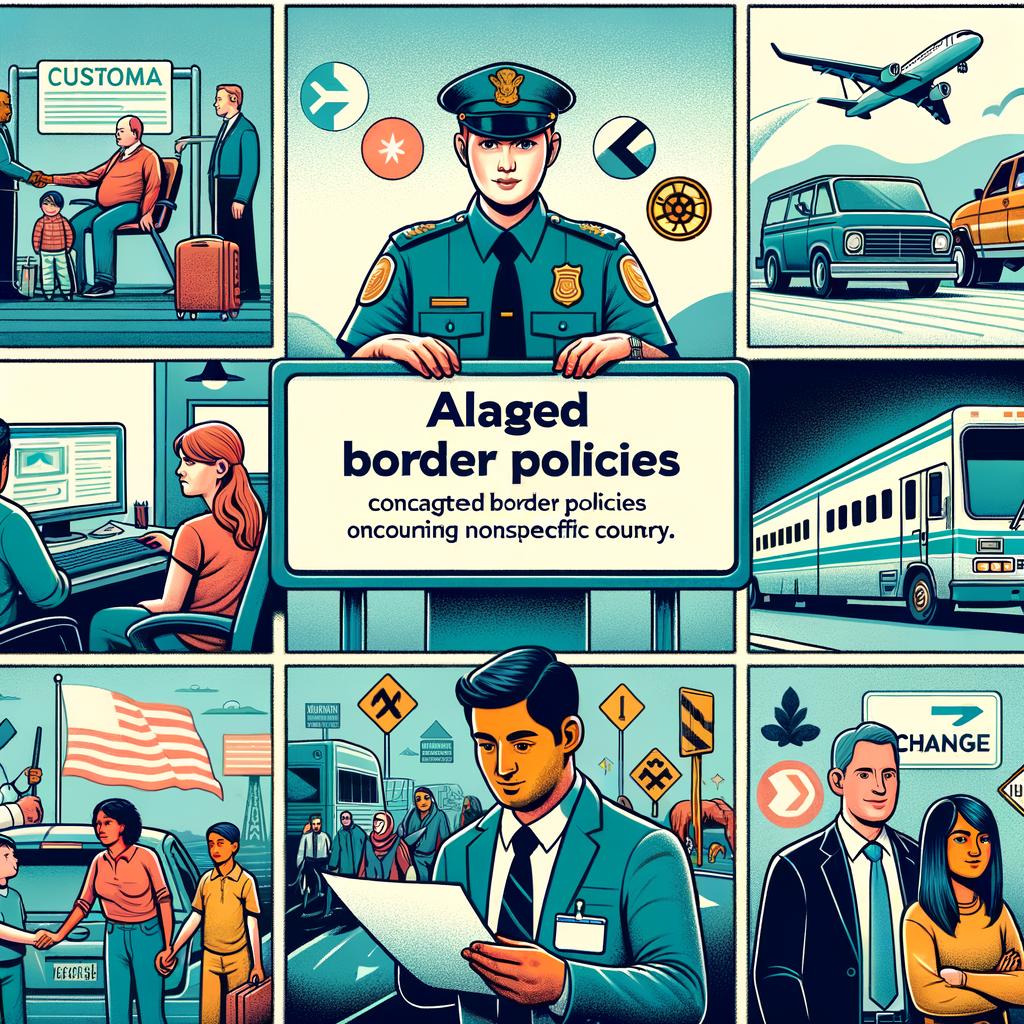Title: Analyzing America’s Response to Recent Border Policy Changes
Introduction:
As the United States grapples with complex immigration challenges, recent shifts in border policy have sparked widespread debate and scrutiny. These changes, influenced by a myriad of factors ranging from humanitarian concerns to national security imperatives, represent not just a tactical adjustment but a fundamental recalibration of America’s approach to immigration. In this landscape of evolving policies, the American public’s response has been as dynamic as the policies themselves, reflecting a spectrum of opinions shaped by personal experiences, political beliefs, and social values.
Understanding this multifaceted response is crucial—not only to grasp the immediate implications for those at the border and the communities they affect but also to anticipate the long-term repercussions on American society as a whole. By analyzing public sentiment, political reactions, and grassroots movements spurred by these changes, we can uncover insights that inform a more effective and compassionate immigration strategy. In a nation built on the principles of diversity and opportunity, it is imperative to engage in this conversation with both an open mind and a critical lens, recognizing that the way we respond today will shape the fabric of America for generations to come.
The recent alterations to border policy have sparked a fervent debate that extends far beyond the confines of immigration discussions. The implications for national security are profound and complex, as these changes could potentially allow for vulnerabilities that jeopardize the safety of American citizens. Critics argue that relaxing enforcement measures may give rise to enhanced illegal entry and trafficking, leading to an increase in crime rates and overall instability within border communities. Moreover, the public’s perception of safety and order heavily hinges on how these policies are communicated and enforced. Key elements influencing public sentiment include:
- Perceptions of safety: Citizens need to feel secure in their communities.
- Transparency in policy: Open communication about policy changes can mitigate fear and mistrust.
- Community impact: Local populations often bear the brunt of policy changes, affecting their quality of life.
Strategically, moving toward a balanced immigration framework requires a multifaceted approach that addresses both security concerns and public sentiment. Comprehensive recommendations to enhance national security while appeasing public fears include:
- Strengthening border technology: Utilizing advanced surveillance and monitoring systems to ensure compliance and security.
- Community engagement: Involving local stakeholders in discussions about border policies to tailor solutions that resonate with their specific needs.
- Policy education: Offering clear information on the reasoning behind changes can restore public confidence and prevent misinformation from spreading.
To Conclude
understanding America’s response to recent border policy changes is not simply an academic exercise; it is a critical lens through which we can evaluate our national identity, values, and the efficacy of our governance. As we have seen, public opinion is deeply divided, reflecting a complex interplay of humanitarian concerns, economic interests, and national security apprehensions. Moving forward, it is imperative that policymakers not only listen to the voices of the American people but also engage in comprehensive and compassionate approaches that address the root causes of migration.
The challenges posed by these border policy shifts are significant, but they also present an opportunity for innovation and leadership. By fostering dialogue, embracing collaboration across all levels of government and civil society, and grounding decisions in empathy and pragmatism, we can forge a path that upholds our commitments to human rights while ensuring the safety and security of our borders. Let us advocate for a balanced, informed approach that recognizes the complexities of immigration and shapes a future where America can be both a haven and a leader on the global stage. The time for thoughtful action is now, and it is in our collective hands to create a fair and just immigration system that truly reflects the best of who we are as a nation.

